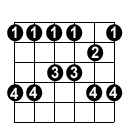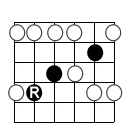The most commonly used scales by guitarists are called pentatonic scales. The word pentatonic gets its name from the Greek word “penta” which means 5 and tonic which stands for tone. That’s what pentatonic scales are: 5 tone scales. The reason they are so commonly used is that their patterns are exceptionally well suited to the guitar’s fretboard and allow a lot of musical freedom when you are playing them.
There are only 5 basic pentatonic patterns. They are the C, A, G, E, and D. They are similar to the 5 basic chord patterns because they can be closely associated with their chord counterparts. These patterns interlock with each other, meaning each pattern has notes that overlap with patterns adjacent to it.
These are the fundamental building blocks of your soloing and you will use the for many years to come. These patterns are the same thing as the pentatonic major.
Memorize each pattern. You should be able to identify them by name and you should know exactly which note is their root note (marked by an “R” in the pictures on the right).
Remember that these are patterns. To play in different key signatures we move the patterns around.
The pictures on the left are the patterns with their suggested fingerings. The pictures on the right are the patterns with their CAGED chord counterpart they are associated with highlighted.
C Scale Pattern
Here is the scale pattern played in the key of C#/Db, because the root note appears on the 4th fret of the A string.
As with all patterns it can be transposed to any key. The pattern remains the same. Here is the same pattern in the key of F, because the root note appears on the 8th fret of the A string which is an F note.
Notice that it looks the same when played. The only difference is that the pattern is being played higher up on the fretboard:
A Scale Pattern
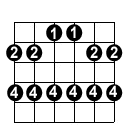

Below is the A scale pattern in the key of C#/Db, because the root note appears on the 4th fret of the A string.

G Scale Pattern
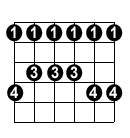
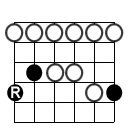
Below is the G scale pattern in the key of C#/Db, because the root note appears on the 9th fret of the low E string.

E Scale Pattern

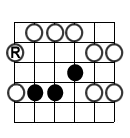
Below is the E scale pattern in the key of D, because the root note appears on the 10th fret of the low E string.

D Scale Pattern

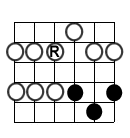
Below is the D scale pattern in the key of B, because the root note appears on the 9th fret of the D string which is a B note.

